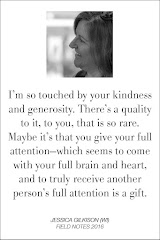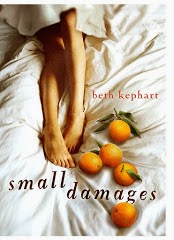Between You & Me/Mary Norris: Loving the Copy Editors
Tuesday, April 21, 2015
It's possible (very possible?) that this blog post will be imperfect. I will either upmake a word; or use an unnecessary semi-colon. I will insist that those whom read this review go buy this book. I will misapply the heesh. I will call the author an authoress. I will be insufficiently restrictive.
I'm about as imperfect as a person gets, but I still love me my grammar books. I've got a stack of them. I find them foon to read. And these confessions of Mary Norris, who has comma asserted for three decades at the New Yorker, make a wonderful addition to my grammar/memoir/humor shelf. Because honestly, some of the funniest stuff I read is found in grammar books. These checkers have a ripe sense of humor, oh but they do:
Norris is a lovable guide to commas and pencils. She (like Daniel Menaker, the New Yorker editor who visited my class at Penn this last semester) sort of kind of just landed at the estimable magazine. She endured furrowed brows, compensated for her own bad handwriting, studied the-art-of-the-hyphen, heard marriage proposal possibilities in author praise, and made a few good finds (more than a few good finds) on proof pages. She talks about it all (or 200 pages of the all) in Between You & Me: Confessions of a Comma Queen. I found this book a happy place to be, a bar of sunshine on the couch, a melding of gentle instruction in life and words.
Here is Norris on commas and clauses:
Here she is on who and whom:
(As I type these words I ponder the punctuation of that last sentence.)
Can we talk about how many times I have been saved by a copy editor? Here I was years ago on a vlog, no less, thanking HarperTeen's Renee Cafiero and Jill Santopolo for their help on an early YA novel, showing off the pages of corrections. And you have, perhaps, noticed my affection for a certain Debbie Deford Minerva in the acknowledgments of One Thing Stolen and (upcoming) This Is the Story of You, who has saved me time and again, both by her enthusiasm and her fact checking, not to mention her ability to gently ask whether I really did mean to have one character in two different places at one time.
Just the other night, I was at Rosemont College, giving my annual "Love Your Copy Editors" talk for Hobart Rowland, the editorial director of Delaware Today and Main Line Today magazines. I had my slew of books. I told my copy editing stories. I goaded. Learn the rules, I said. Learn how to break the rules. Help us authors be our best and brightest selves.
Help me.
I'm about as imperfect as a person gets, but I still love me my grammar books. I've got a stack of them. I find them foon to read. And these confessions of Mary Norris, who has comma asserted for three decades at the New Yorker, make a wonderful addition to my grammar/memoir/humor shelf. Because honestly, some of the funniest stuff I read is found in grammar books. These checkers have a ripe sense of humor, oh but they do:
Norris is a lovable guide to commas and pencils. She (like Daniel Menaker, the New Yorker editor who visited my class at Penn this last semester) sort of kind of just landed at the estimable magazine. She endured furrowed brows, compensated for her own bad handwriting, studied the-art-of-the-hyphen, heard marriage proposal possibilities in author praise, and made a few good finds (more than a few good finds) on proof pages. She talks about it all (or 200 pages of the all) in Between You & Me: Confessions of a Comma Queen. I found this book a happy place to be, a bar of sunshine on the couch, a melding of gentle instruction in life and words.
Here is Norris on commas and clauses:
If the clause is integral to the meaning of the sentence, it should not be set off by commas. It is restrictive, that intimidating word wielded by grammarians in the attempt to fend off commas. (People think we live to put commas in, but it isn't so.) A phrase is restrictive if it tightens the meaning, if it draws an invisible belt around which fact, out of all the facts in the universe, pertains.
Here she is on who and whom:
The choice of "who" or "whom" is governed not by its role as the object of the sentence or the object of a preposition but by its role in the group of words that has been plugged into that position. Break it down: You can tell he (or she) is top dog. You would never say, "You can tell him (or her) is top dog." That's the point: "who" and "whom" are standing in for a pronoun: "who" stands in for "he, she, they, I, we"; "whom" stands in for "him, her, them, me, us."
(As I type these words I ponder the punctuation of that last sentence.)
Can we talk about how many times I have been saved by a copy editor? Here I was years ago on a vlog, no less, thanking HarperTeen's Renee Cafiero and Jill Santopolo for their help on an early YA novel, showing off the pages of corrections. And you have, perhaps, noticed my affection for a certain Debbie Deford Minerva in the acknowledgments of One Thing Stolen and (upcoming) This Is the Story of You, who has saved me time and again, both by her enthusiasm and her fact checking, not to mention her ability to gently ask whether I really did mean to have one character in two different places at one time.
Just the other night, I was at Rosemont College, giving my annual "Love Your Copy Editors" talk for Hobart Rowland, the editorial director of Delaware Today and Main Line Today magazines. I had my slew of books. I told my copy editing stories. I goaded. Learn the rules, I said. Learn how to break the rules. Help us authors be our best and brightest selves.
Help me.

















0 comments:
Post a Comment